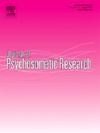Biopsychosocial complexity and compulsory admission to the psychiatric ward: A retrospective observational study
IF 3.3
2区 医学
Q2 PSYCHIATRY
引用次数: 0
Abstract
Background
The INTERMED scale is a tool used to assess the biopsychosocial (BPS) complexity through a semi-structured interview that explores the psychological, biological, social and health-system domains. The objective of this study was to investigate the use of the INTERMED scale as a predictor of Compulsory Admission (CA) in patients with psychiatric disorders.
Method
Sociodemographic and clinical information, including INTERMED and HoNOS scores, was collected retrospectively on patients admitted to the hospital psychiatric ward under both CA and Voluntary Admission (VA). The correlations between these variables and admission type were analysed using descriptive statistics and Chi2 and t-test. Then, univariate logistic regression was used to estimate Odds Ratios (ORs) with 95% confidence intervals (95% CIs) for CA based on different predictors, including the INTERMED score, as a measure of BPS complexity.
Results
The entire sample of 332 CA and VA patients exhibited considerable BPS complexity (mean INTERMED total score 25.8 ± 8.4), but this was higher among CA patients (all INTERMED scores but the biological domain one); further significant differences were observed between CA and VA patients, e.g. diagnosis at discharge or dosage of antipsychotic medications. Moreover, high scores on the INTERMED scale were identified as predictors of CA, particularly the total score (OR:1.05[95% CI:1.02;1.08]), the psychological domain score (OR:1.30[95% CI:1.18;1.44]) and the health-system domain score (OR:1.15[95% CI:1.05;1.25]).
Conclusions
This study found significant associations between some INTERMED dimensions and CA. INTERMED may be a useful screening instrument to identify specific areas of vulnerability in patients with psychiatric disorders, that could support clinical strategies to reduce hospitalization and CA.
生物心理社会复杂性与精神科强制住院:一项回顾性观察研究
INTERMED量表是一种通过半结构化访谈来评估生物心理社会(BPS)复杂性的工具,该访谈探讨了心理、生物、社会和卫生系统领域。本研究的目的是调查使用INTERMED量表作为精神障碍患者强制入院(CA)的预测因子。方法回顾性收集在CA和自愿住院(VA)下住院的精神科患者的社会人口学和临床信息,包括INTERMED和HoNOS评分。采用描述性统计、Chi2检验和t检验分析这些变量与入院类型的相关性。然后,使用单变量逻辑回归来估计基于不同预测因子(包括INTERMED评分)的CA的95%置信区间(95% ci)的比值比(ORs),作为衡量BPS复杂性的指标。结果332例CA和VA患者均表现出相当程度的BPS复杂性(平均INTERMED总分25.8±8.4),但CA患者的BPS复杂性更高(除生物域评分外,所有INTERMED评分均为25.8±8.4);CA和VA患者在出院时的诊断或抗精神病药物的剂量等方面存在进一步的显著差异。此外,INTERMED量表上的高分被确定为CA的预测因子,特别是总分(OR:1.05[95% CI:1.02;1.08])、心理领域得分(OR:1.30[95% CI:1.18;1.44])和卫生系统领域得分(OR:1.15[95% CI:1.05;1.25])。本研究发现一些INTERMED维度与CA之间存在显著关联。INTERMED可能是一种有用的筛查工具,可用于识别精神障碍患者的特定脆弱区域,从而支持临床策略,以减少住院和CA。
本文章由计算机程序翻译,如有差异,请以英文原文为准。
求助全文
约1分钟内获得全文
求助全文
来源期刊
CiteScore
7.40
自引率
6.40%
发文量
314
审稿时长
6.2 weeks
期刊介绍:
The Journal of Psychosomatic Research is a multidisciplinary research journal covering all aspects of the relationships between psychology and medicine. The scope is broad and ranges from basic human biological and psychological research to evaluations of treatment and services. Papers will normally be concerned with illness or patients rather than studies of healthy populations. Studies concerning special populations, such as the elderly and children and adolescents, are welcome. In addition to peer-reviewed original papers, the journal publishes editorials, reviews, and other papers related to the journal''s aims.

 求助内容:
求助内容: 应助结果提醒方式:
应助结果提醒方式:


